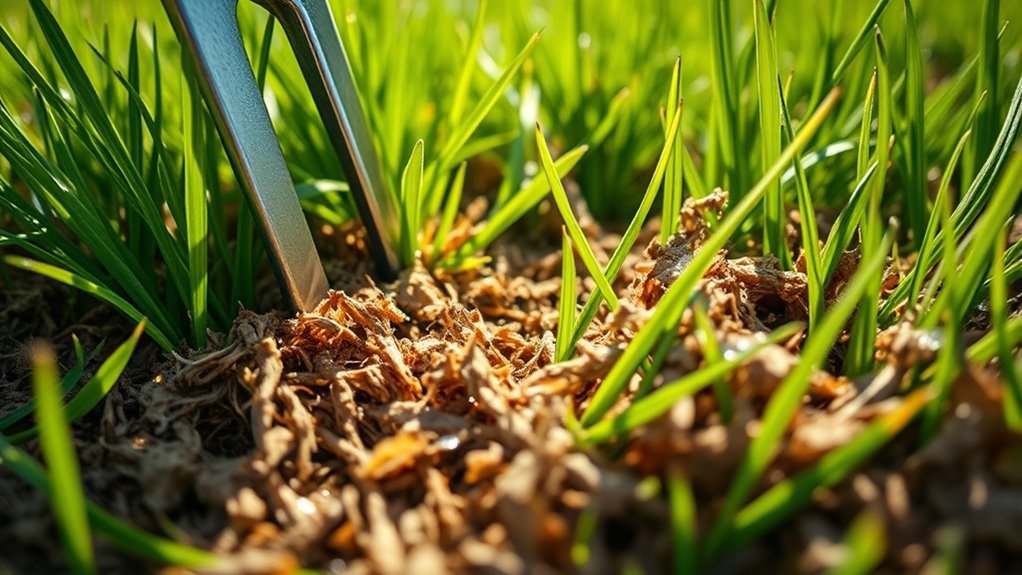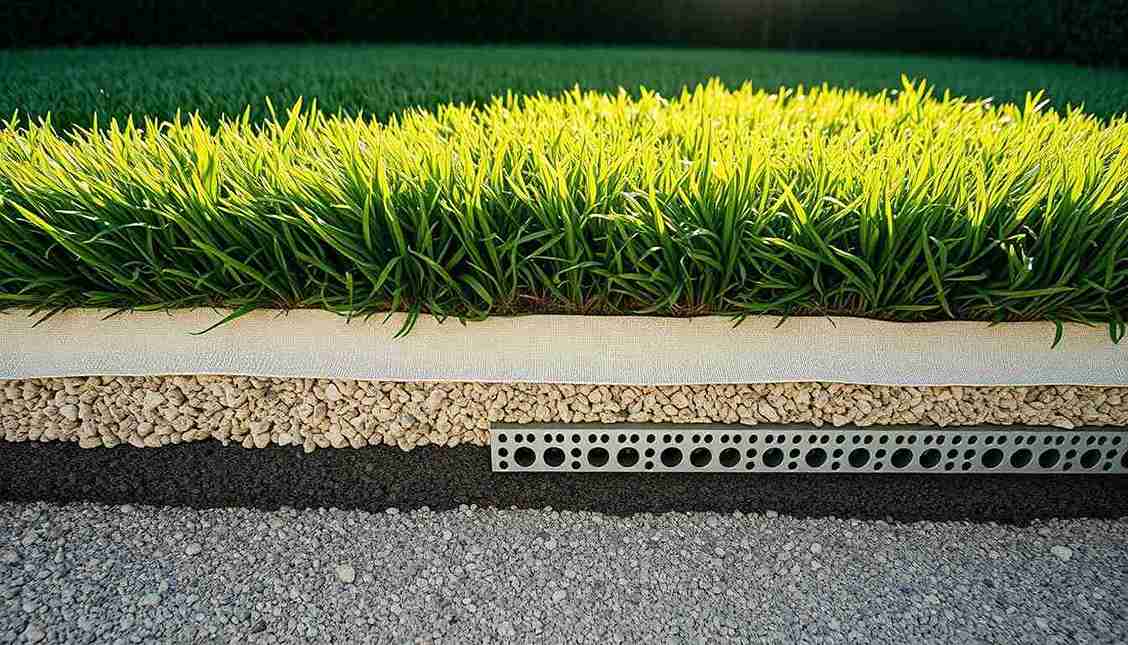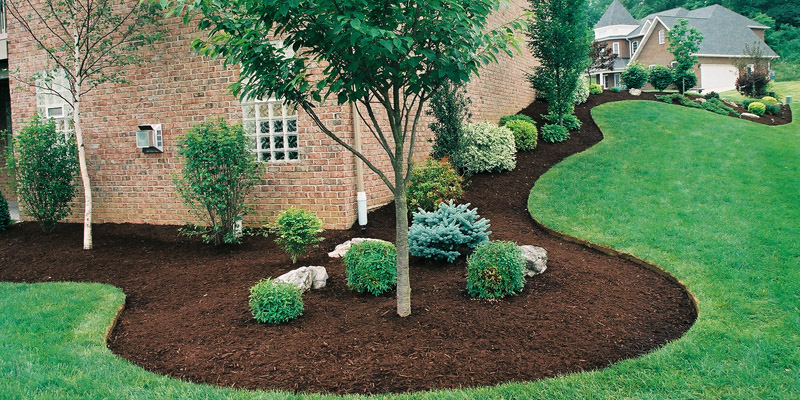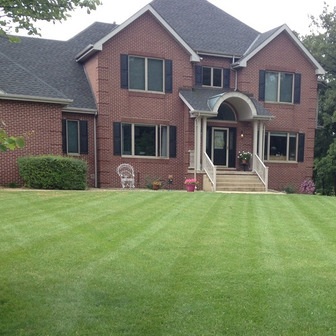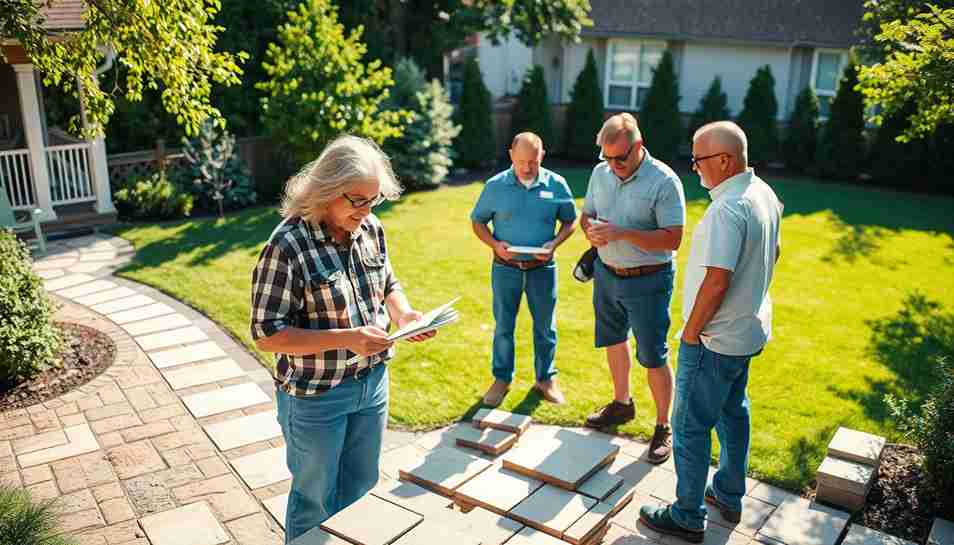You’ll need multiple approaches to effectively kill moss in your lawn. Apply iron sulfate solution (3 oz per 1,000 sq ft) to quickly blacken and kill moss patches. Remove dead moss through mechanical raking and dethatching. Balance your soil’s pH to 6.0-7.0 using lime amendments. Improve drainage through core aeration, and increase sunlight by pruning overhanging branches. These proven strategies work together to create conditions where grass thrives and moss can’t survive.
Chemical Solutions: Using Iron Sulfate and Moss Killers

Two primary chemical solutions effectively eliminate lawn moss: iron sulfate and specialized moss killers.
Iron sulfate application works quickly to kill moss while simultaneously feeding your grass. You’ll need to mix 3 ounces of iron sulfate per 1,000 square feet of lawn area.
Apply the solution using a pump sprayer when temperatures are between 40-80°F for ideal results. Within hours, you’ll notice the moss turning black as it dies.
Selective moss killers contain active ingredients like copper sulfate or potassium salts of fatty acids. These products are designed to target moss without harming your grass.
For best results, apply these solutions during spring or fall when moss growth is most active. Remember to follow the manufacturer’s instructions precisely, as over-application can damage your lawn.
Mechanical Removal and Dethatching
While chemical treatments offer one approach to moss control, mechanical removal provides a direct and immediate solution for eliminating moss from your lawn.
Using proper rake techniques, you’ll need to vigorously scrape the moss from affected areas, working in multiple directions to loosen its grip on the soil.
For the best results, combine mechanical removal with lawn aeration. You can use a dethatching rake or power dethatcher to remove the layer of dead grass and organic material that’s accumulated between your grass and soil.
This process improves air circulation and reduces the moist conditions that moss thrives in. After dethatching, collect and dispose of the moss and thatch debris.
You’ll want to overseed the cleared areas immediately to prevent new moss from establishing itself in the bare spots.
Balancing Soil Ph Levels

Maintaining proper soil pH levels plays a crucial role in preventing moss growth and promoting healthy grass development. Most grass varieties thrive in soil with a pH between 6.0 and 7.0, while moss prefers acidic conditions below 6.0.
You’ll need to start by measuring your soil’s current pH using reliable testing kits, which you can purchase from garden centers or extension offices. If your soil is too acidic, you can raise the pH by applying lime-based soil amendments. For every point you need to increase, apply approximately 50 pounds of limestone per 1,000 square feet of lawn.
Don’t rush the process it’s best to adjust pH gradually over several months. You’ll want to retest your soil periodically to confirm you’re achieving the desired levels and make adjustments as needed.
Improving Drainage and Air Flow
Poor drainage and limited air circulation create ideal conditions for moss, even when soil pH is properly balanced. To combat these issues, you’ll need to implement effective drainage techniques and boost air circulation around your lawn.
- Install underground drainage systems like French drains or dry wells to redirect excess water away from problem areas, preventing waterlogged soil that moss thrives in.
- Trim back overhanging tree branches and dense shrubs that block sunlight and restrict air movement across your lawn’s surface.
- Core aerate your lawn annually to reduce soil compaction, allowing water to penetrate deeper and roots to access oxygen more effectively.
These improvements will create an environment that’s less hospitable to moss while promoting healthy grass growth.
You’ll notice the best results when combining proper drainage with improved air circulation.
Creating Sun-Friendly Growing Conditions

Since moss flourishes in shaded areas with minimal sunlight, you’ll need to improve light exposure to create conditions that favor grass growth over moss development.
Strategically prune or remove overhanging tree branches that block sunlight from reaching your lawn. Focus your lawn maintenance efforts on cutting back dense shrubs and reducing canopy coverage by 30-40% to optimize sun exposure.
A well-planned pruning strategy can transform shaded lawns, with targeted reduction of tree canopy creating optimal sunlight conditions for grass growth.
If you can’t increase direct sunlight, consider replacing existing grass with shade-tolerant varieties that can better compete with moss in low-light conditions.
For areas where sun exposure remains limited, maintain grass at a slightly higher height to optimize photosynthesis.
Keep in mind that proper mowing techniques, combined with improved light conditions, will strengthen grass roots and naturally discourage moss from establishing itself in your lawn.
Frequently Asked Questions
How Quickly Will Moss Die After Treatment?
You’ll notice moss growth dying within 2-3 days after applying treatment. The complete treatment duration varies between 1-2 weeks, depending on moisture levels and the product you’ve used to eliminate it.
Can Pets Walk on Lawns Treated for Moss?
You’ll need to keep pets off treated areas for at least 24 hours for ideal pet safety. Once the lawn care product has dried completely, it’s generally safe for your animals to resume their outdoor activities.
Will Killing Moss Leave Bare Patches in My Lawn?
Like a blank canvas awaiting new growth, you’ll see bare spots after moss dies. Don’t worry – with proper lawn care tips like overseeding and moss regrowth prevention techniques, you’ll have lush grass filling those patches soon.
Does Vinegar Work as an Effective Moss Killer?
While vinegar’s effectiveness on moss growth is moderate, you’ll need a strong concentration (20% acetic acid) for best results. It’s not the most reliable solution, and you’ll likely need multiple applications for success.
How Often Should Moss Treatment Be Repeated Throughout the Year?
Like clockwork, you’ll need to tackle moss growth prevention twice yearly – once in early spring and again in fall. Follow your seasonal treatment schedule religiously, especially when conditions are damp and cool.


